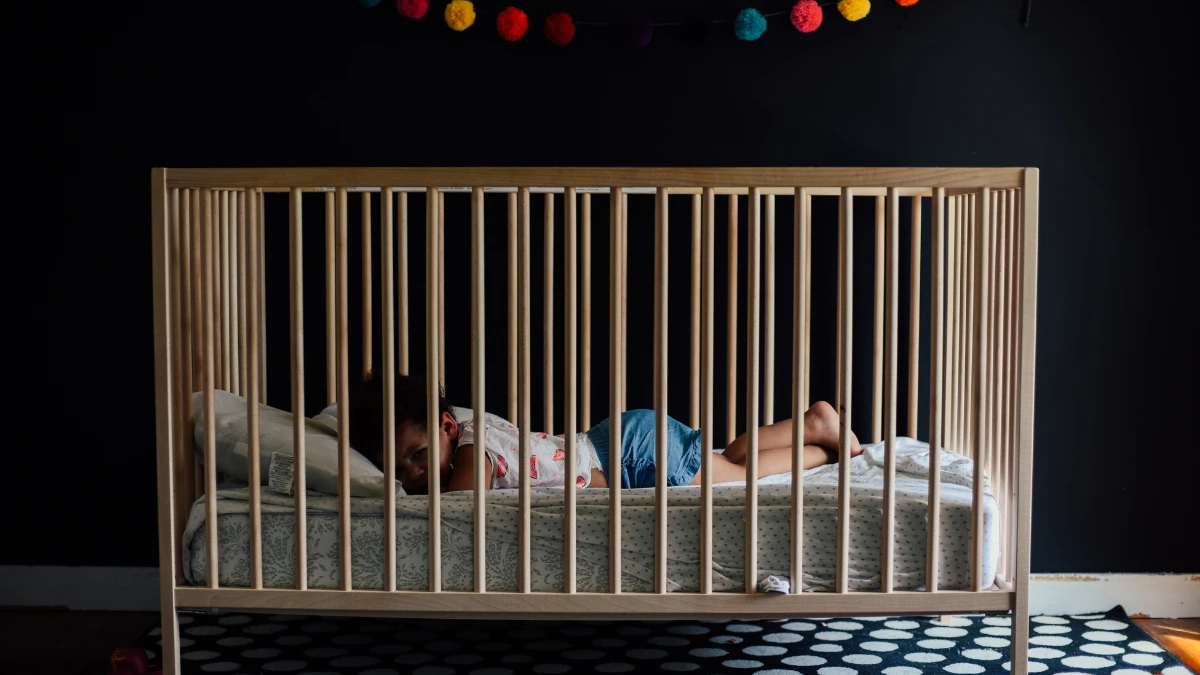Your toddler just climbed out of their crib for the first time, and your heart stopped. That moment every parent dreads signals how to convert a crib to a toddler bed, but the transition feels overwhelming. You’re worried about safety, wondering if your child is ready, and dreading weeks of disrupted sleep for the whole family.
The timing seems impossible, too early and your toddler isn’t developmentally prepared, too late and climbing becomes dangerous. You need clear guidance on when to make the switch, how to do it safely, and strategies to maintain everyone’s sanity during the process.
This process covers the exact signs that indicate readiness, walks you through the step-by-step crib conversion process with toddler bed safety measures, and provides proven transition strategies that help your little one adjust more quickly while minimizing sleep disruption.
How To Convert Crib To Toddler Bed: Safe Step-by-Step Guide
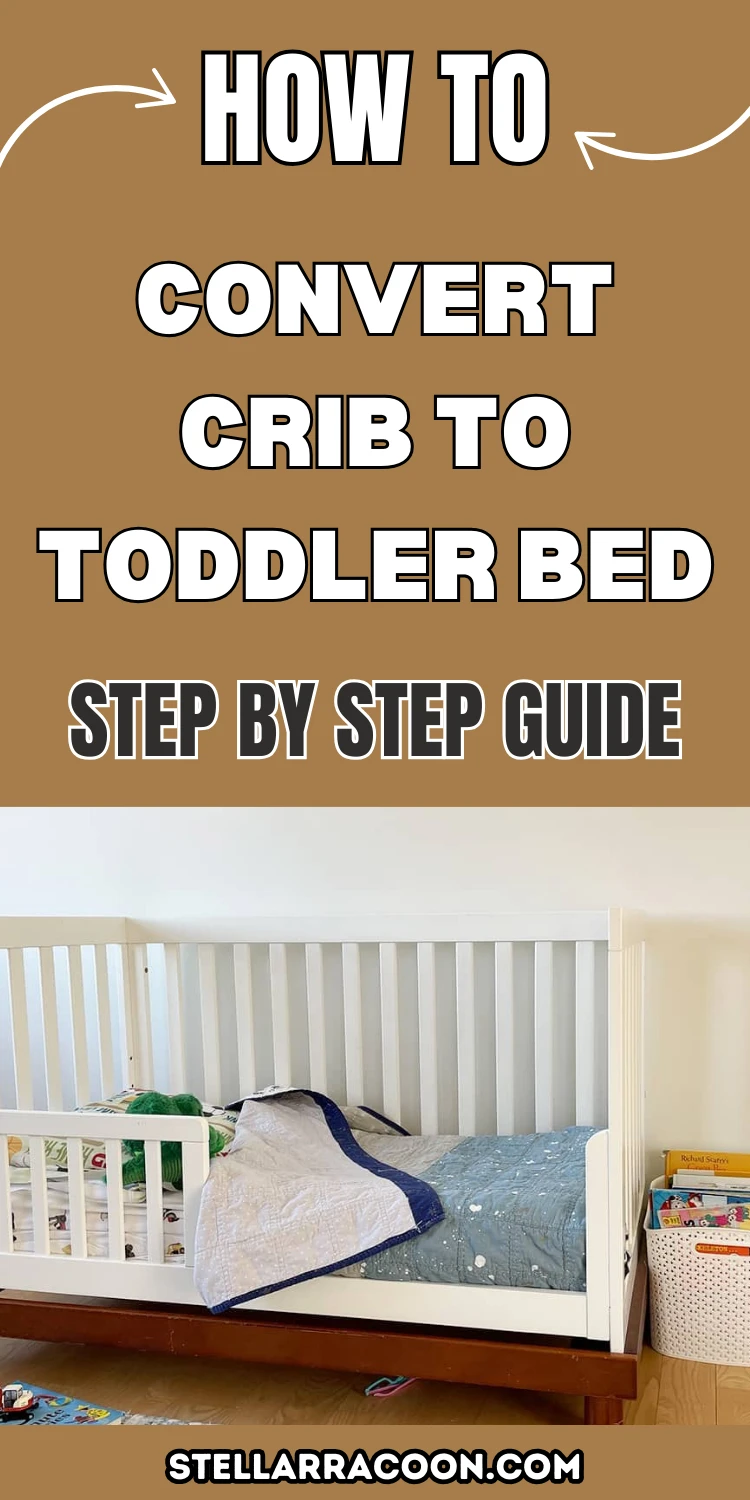
When to Convert Your Crib to a Toddler Bed
Age isn’t everything, but it’s a good starting point. Most kids transition between 18 months and 3 years old. The American Academy of Pediatrics says to convert when your child reaches 35 inches tall. That’s usually around age 2 to 2.5 years.
If your toddler climbs out of the crib, it’s time to switch immediately. Sleep Foundation data shows 23% of toddlers try climbing out by 18 months. Don’t wait for a fall. Kids ready for a toddler bed often start potty training and follow simple instructions better. They understand “stay in bed” and respond to bedtime rules.
If your child falls while climbing out, convert immediately. The same goes if they’re getting hurt trying to escape or if the crib rail height puts them at risk. Some 18-month-olds are ready. Others need to wait until age 3. Trust your gut and your child’s development over rigid timelines.
Essential Tools and Safety Items You’ll Need
Start with your conversion kit, which should include toddler rails, screws, and step-by-step instructions that came with your original crib. If you’re missing pieces, buy a universal kit like the Delta Children’s guardrail for $25-35. You’ll need basic tools like a Phillips head screwdriver and Allen wrenches in the sizes specified in your kit instructions.
Add safety gear to prevent nighttime accidents, bed rail guards like Safety 1st Secure Top ($40-50) stop falls, while corner protectors cushion sharp edges. Consider comfort extras like a small nightlight and your child’s familiar crib bedding to make the transition smoother and less scary for nervous toddlers
Step-by-Step Crib Conversion Process
Converting your crib doesn’t require special skills, but following the right order keeps everyone safe. Here’s how to do it without stress or mistakes.
1. Start with room prep
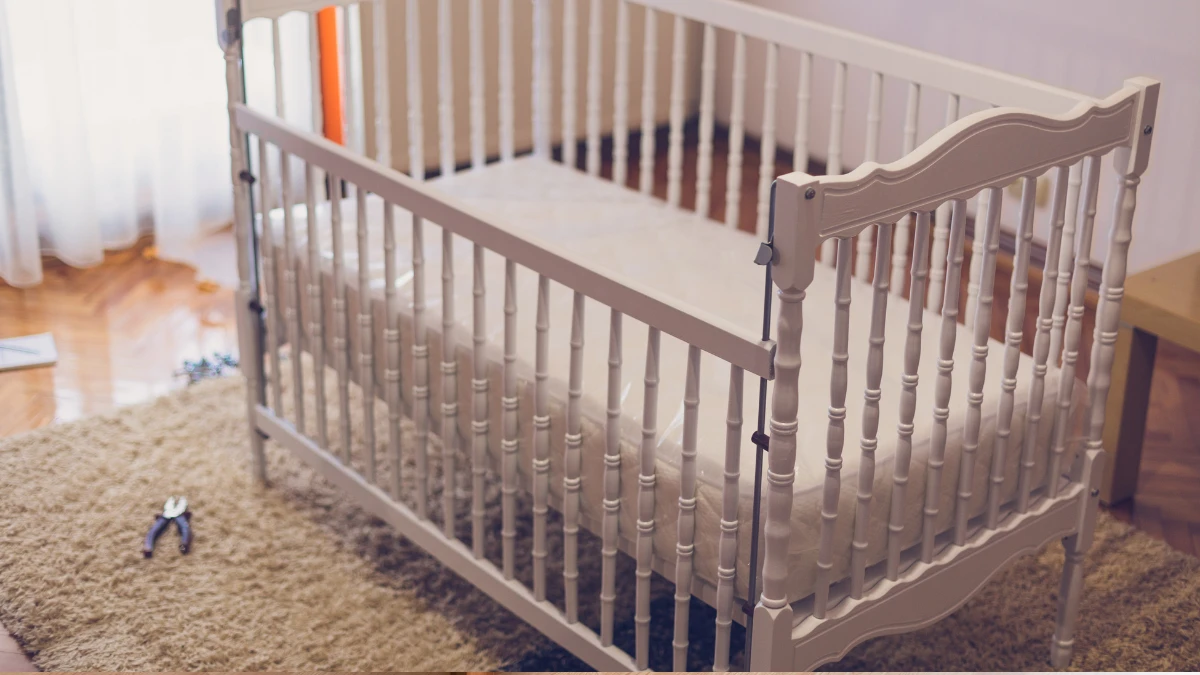
Clear toys and furniture away from the crib. Gather your tools and conversion kit pieces. Double-check you have everything before starting; nothing’s worse than realizing you’re missing a screw halfway through.
2. Remove bedding and mattress completely
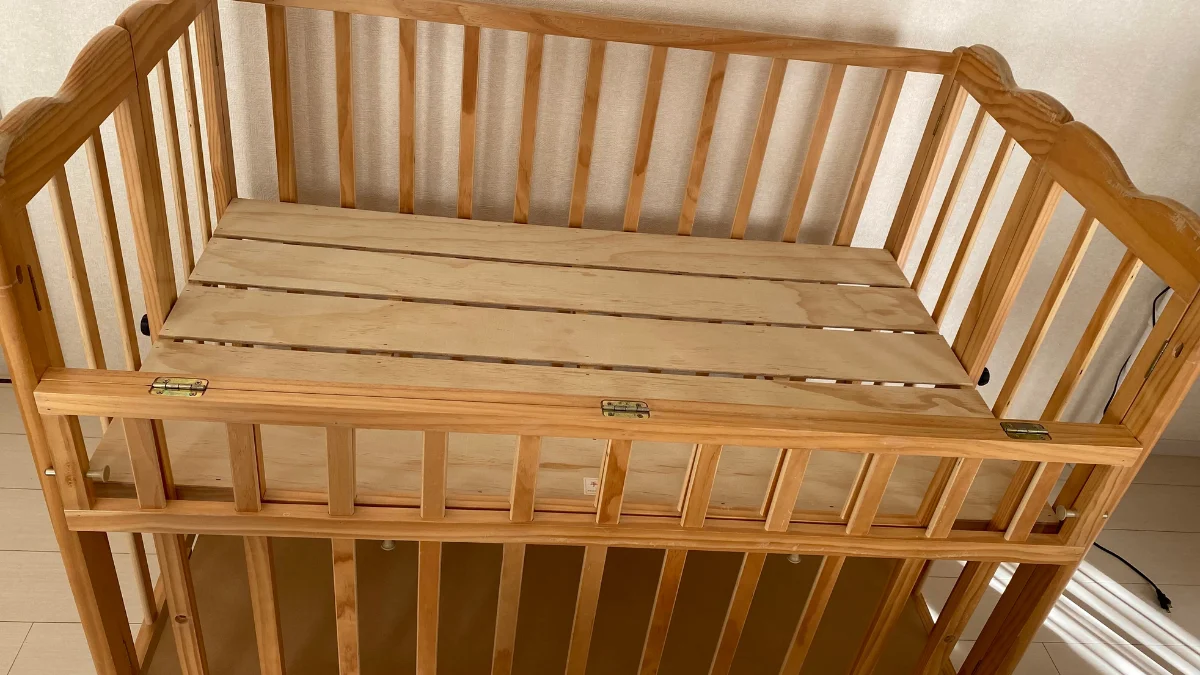
This gives you full access to work and prevents anything from falling inside the crib frame. Set the mattress somewhere clean where it won’t get damaged.
3. Find the front panel bolts carefully
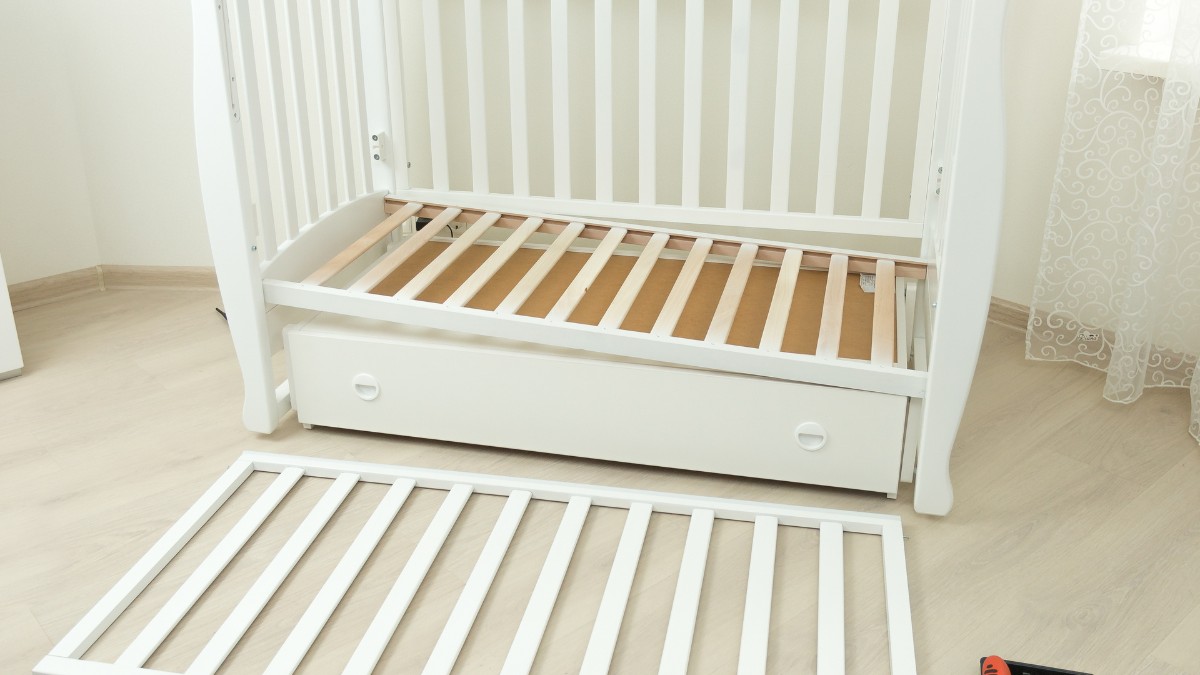
Most cribs have four main connection points. Use your screwdriver to remove these bolts slowly. Keep all hardware in a small bowl so nothing gets lost. Some panels are heavier than they look, so get help if needed.
4. Install the conversion rail next
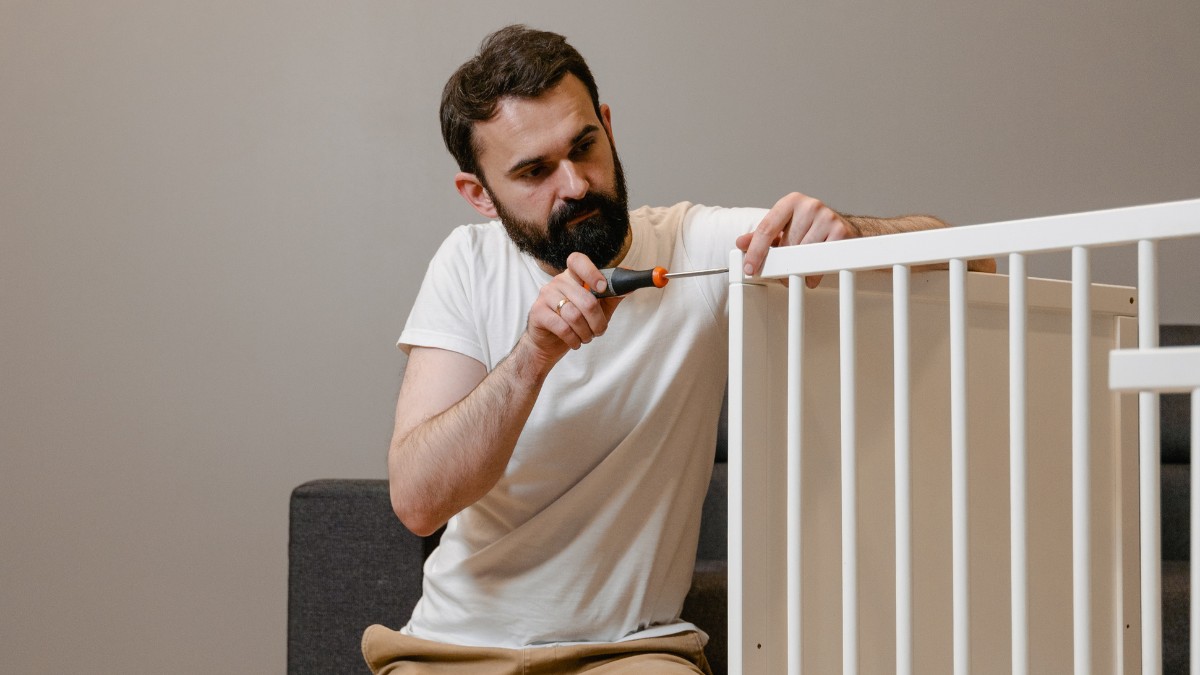
Follow your manufacturer’s instructions exactly. They know their product best. The rail should click or bolt into place securely. Don’t force anything that doesn’t fit easily.
5. Drop the mattress to its lowest setting
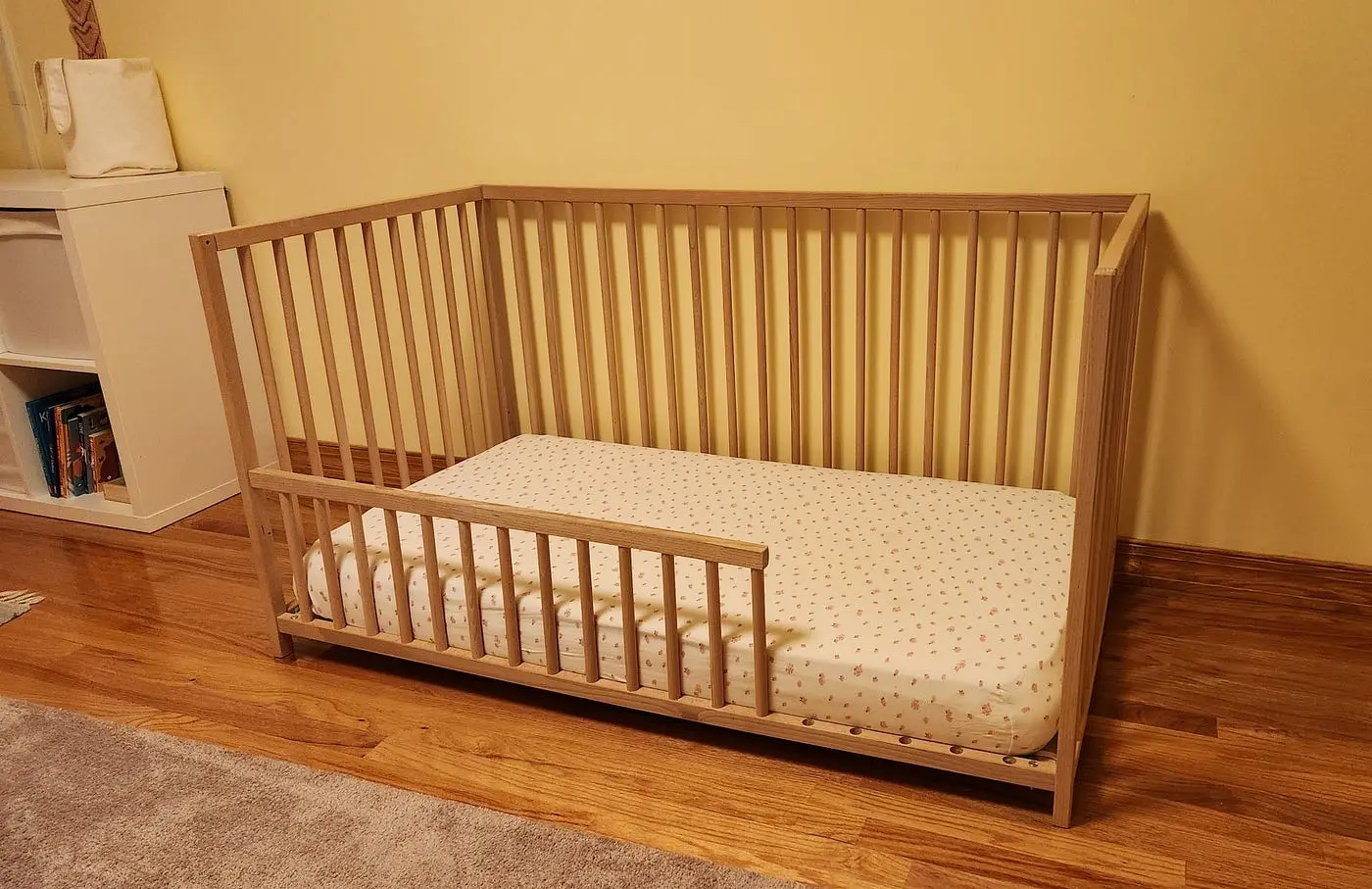
This prevents your toddler from rolling out. Most conversion setups require the bottom position for safety. Reinstall the mattress and push down on all corners to test stability.
6. Do a final safety check
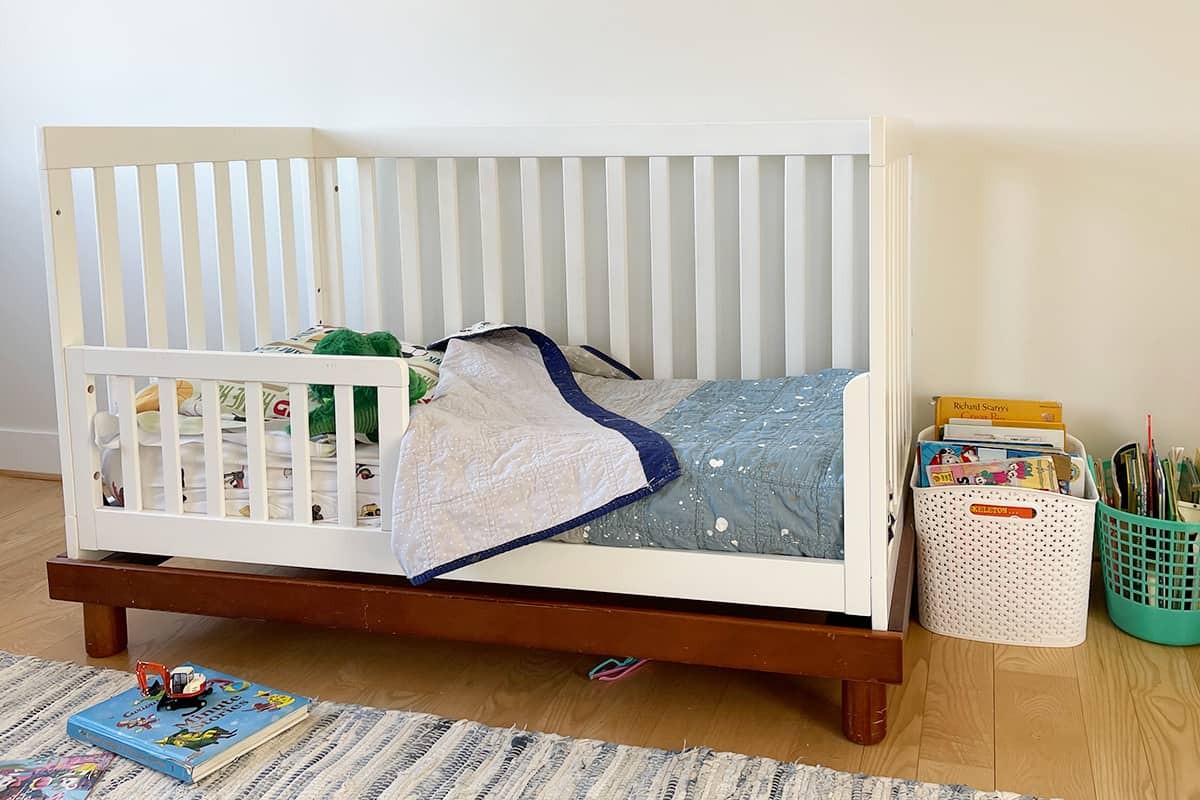
Shake the bed gently to test for wobbles. Verify that all bolts are tight and the rail is securely in place. Your toddler’s safety depends on this final step.
Making the Transition Smooth: Sleep Training Tips
The toddler bed switch disrupts sleep for everyone. Pediatric sleep consultants say expect 2-4 weeks for adjustment, but smart strategies help. Start gradually letting your toddler nap in the new bed while keeping crib nights.
This builds positive associations without overwhelming them. Keep bedtime routines identical with the same bath time, stories, and songs since familiar patterns signal sleep time.
When your toddler tests boundaries by getting up repeatedly, walk them back calmly without talking or engaging, stay boring, and most stop testing within days. Use familiar comfort objects, such as stuffed animals from the crib, to bridge the gap.
Common Mistakes to Avoid During Conversion
i. Don’t rush the conversion because a new baby is coming; your toddler needs to be developmentally ready, not just displaced.
ii. Avoid converting when your child is already dealing with big changes like potty training or starting daycare.
iii. Never use the toddler bed as punishment or threaten to put them back in the crib for bad behavior, which creates negative associations.
Many parents focus only on the bed but forget to secure furniture, cover outlets, or remove climbing hazards that become dangerous with newfound freedom. Be consistent with bedtime enforcement once you make the switch, as mixed messages can confuse toddlers and prolong the adjustment period.
FAQs
Can I use any crib mattress in a toddler bed?
Yes, standard crib mattresses fit toddler bed frames perfectly. Keep using your existing crib mattress; it’s already the right firmness and size.
What if my child keeps getting out of bed at night?
This is completely normal during the first few weeks. Walk them back to bed calmly without talking or engaging. Stay consistent and boring; most children stop testing boundaries within a week when they realize it doesn’t get attention.
When should I remove the toddler bed rails completely?
Most children can sleep safely without rails between the ages of 4-5, but it depends on the individual child. Remove rails gradually – start with naptime, then progress to overnight once your child consistently stays in bed and moves carefully.
How do I childproof the room for a toddler bed?
Secure heavy furniture to walls, cover electrical outlets, install window guards, remove or pad sharp corners, and ensure no climbing hazards near the bed.

